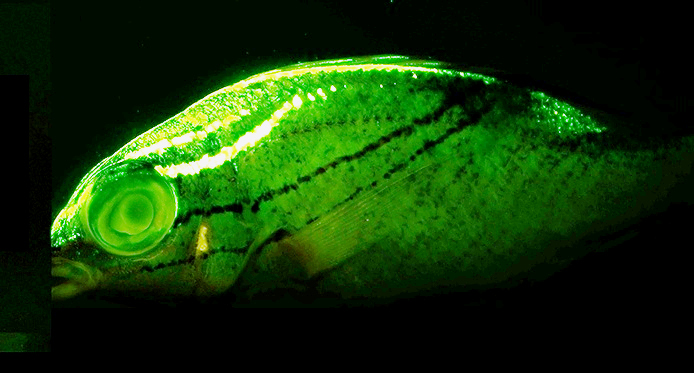Scientists have recently discovered that some amphibians have the ability to glow in the dark. They reported their findings in the journal “Science Reports.”
The researchers used ultraviolet or blue light to test 32 amphibian species, and found they have an ability called “biofluorescence.” A biofluorescent animal can absorb light at one wavelength and then emit it at another.
Biofluorescence is not new. Scientists have found sharks, jellyfish, and sea turtles with the ability. Up until now, though, scientists have seen biofluorescence mainly in aquatic animals. It’s much less common in terrestrial animals like salamanders or frogs.
Matt Davis and Jennifer Lamb, researchers at Minnesota’s St. Cloud University, first observed the ability in a salamander. Curious, they decided to see how many other amphibians had biofluorescent properties. They also wanted to see how many colors and patterns they produced.
The scientists soon observed that even species that had drab coloring under normal light were biofluorescent. The Rio Cauca caecilian, for example, is a limbless amphibian that appears dull grey under normal conditions. Under blue light, however, it glows bright green.
The researchers found a wide range of colors and patterns. They also observed that bones and urine could also glow bright yellow, orange, or green. Both tadpoles and adults could be biofluorescent.
Biofluorescence may look pretty to humans, but the researchers hypothesized that it has practical benefits for the amphibians. They speculated that it could help them attract mates or find each other in dim light. It may also help with predator mimicry or camouflage.
Lamb later issued a statement describing her excitement about this discovery. She noted that it could provide insights into the biology of amphibians throughout the world. She also recalled her surprise when she and her colleagues examined the Eastern tiger salamander (Ambystoma tigrinum). It was the first salamander species they worked with, and its yellow spots glowed a bright neon green.
There are several ways that an animal can develop biofluorescent capabilities. They might have special cells that contain pigment and reflect light. They can also have fluorescent compounds and proteins in their skin, bones, and secretions.
The discovery of biofluorescence in amphibians does lead to questions about amphibian evolution. The researchers noted that the ability appeared in distantly related species. That means that it could have appeared fairly early in amphibian evolution.



